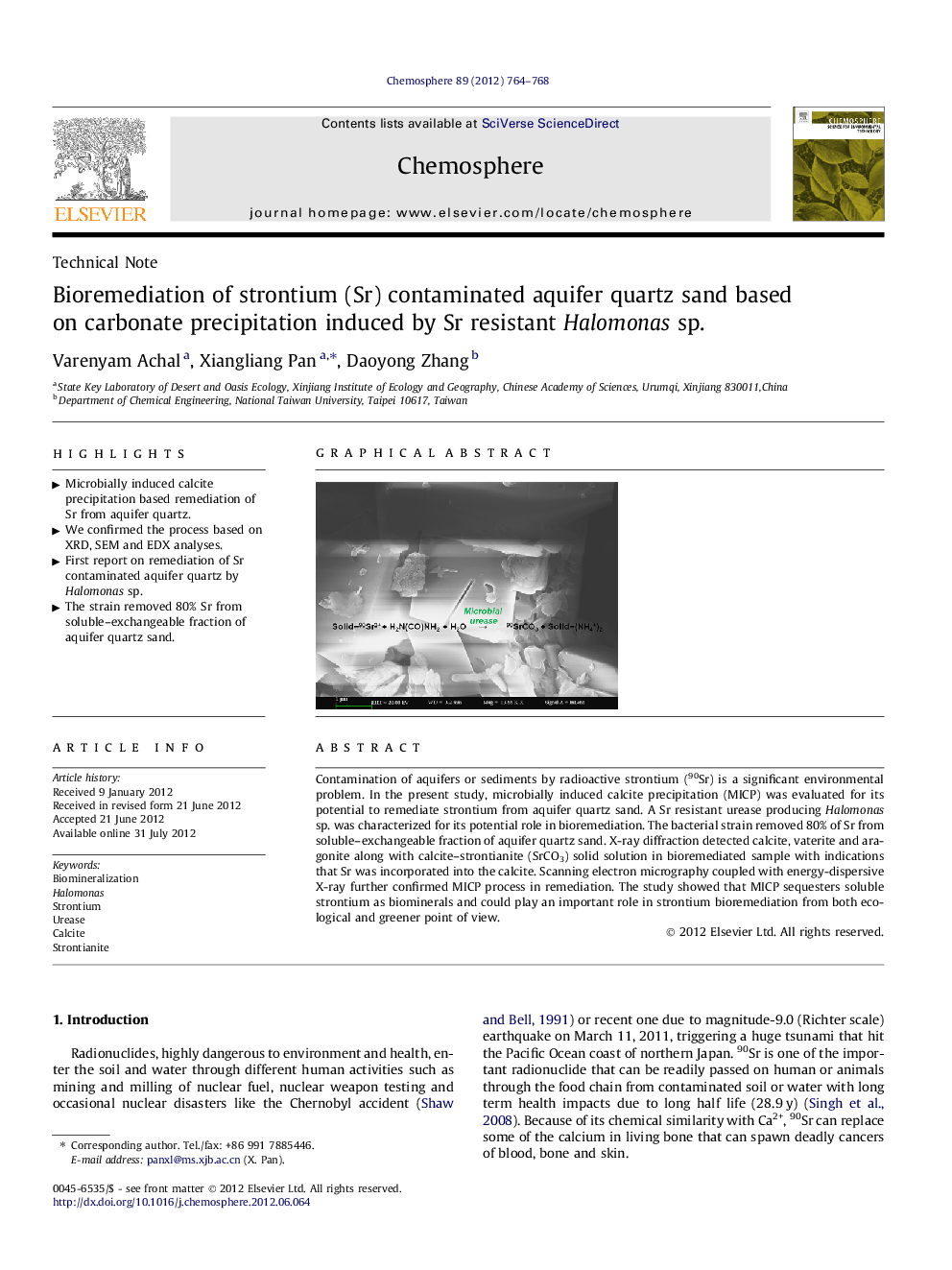| Article ID | Journal | Published Year | Pages | File Type |
|---|---|---|---|---|
| 4410038 | Chemosphere | 2012 | 5 Pages |
Contamination of aquifers or sediments by radioactive strontium (90Sr) is a significant environmental problem. In the present study, microbially induced calcite precipitation (MICP) was evaluated for its potential to remediate strontium from aquifer quartz sand. A Sr resistant urease producing Halomonas sp. was characterized for its potential role in bioremediation. The bacterial strain removed 80% of Sr from soluble–exchangeable fraction of aquifer quartz sand. X-ray diffraction detected calcite, vaterite and aragonite along with calcite–strontianite (SrCO3) solid solution in bioremediated sample with indications that Sr was incorporated into the calcite. Scanning electron micrography coupled with energy-dispersive X-ray further confirmed MICP process in remediation. The study showed that MICP sequesters soluble strontium as biominerals and could play an important role in strontium bioremediation from both ecological and greener point of view.
Graphical abstractFigure optionsDownload full-size imageDownload as PowerPoint slideHighlights► Microbially induced calcite precipitation based remediation of Sr from aquifer quartz. ► We confirmed the process based on XRD, SEM and EDX analyses. ► First report on remediation of Sr contaminated aquifer quartz by Halomonas sp. ► The strain removed 80% Sr from soluble–exchangeable fraction of aquifer quartz sand.
